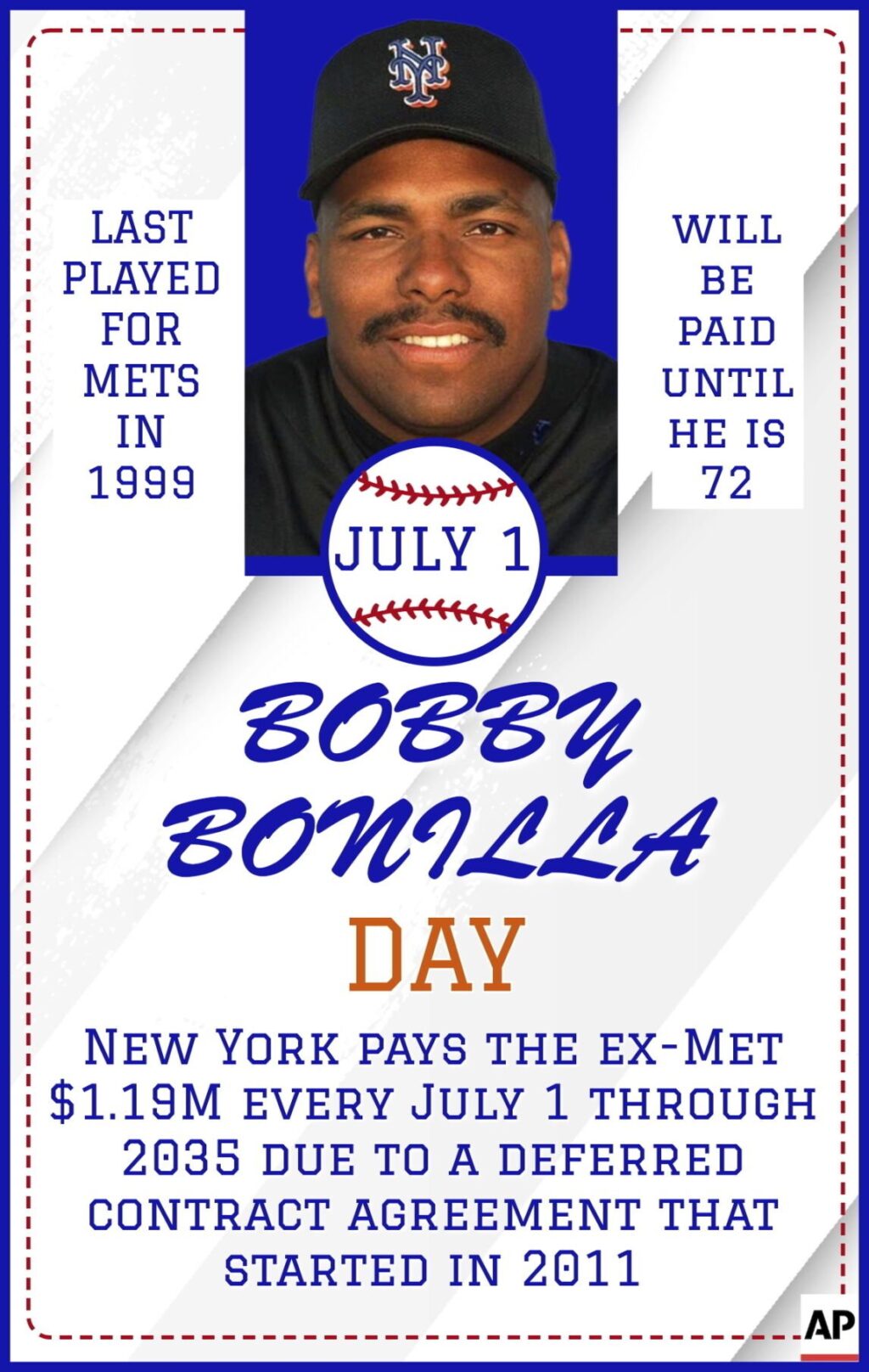
Introduction
The Bobby Bonilla contract is one of the most famous agreements in sports history, not just for the player involved but also for its unique financial structure. Bonilla, a former major league baseball player, struck a deal with the New York Mets in 1999 that still captures the attention of sports fans and analysts alike. This deal, which will see Bonilla receiving annual payments through 2035, raises questions about the management of sports contracts and the implications for teams and players.
The Contract Details
Bobby Bonilla’s original contract with the New York Mets included a large sum of money that was meant to be paid off immediately following his departure from the team. However, instead of receiving the total amount upfront, Bonilla agreed to defer his payments to the Mets. The deal stipulated that he would receive approximately $1.19 million every July 1 from 2011 until 2035, thanks to the Mets agreeing to pay an interest rate of 8% on the deferred amount.
This means Bonilla will end up earning a total of nearly $29 million over 25 years for a contract that originally gave him about $5.9 million in 2000. The decision to defer payments was influenced by the Mets’ need to cut costs at the time, and it ultimately turned into a financially beneficial decision for Bonilla. It has since become a case study in financial acumen and planning.
Impact on Sports Contracts
The Bobby Bonilla contract is significant not only for its scale but for what it represents in sports economics. It has become a talking point about the risks associated with deferred payments and the financial liabilities that can emerge from long-term contracts. As teams continue to shell out big money to players, the structure and implications of these contracts are increasingly scrutinized.
Bonilla’s case serves as a reminder of the importance of strategic financial planning that can lead to long-term gains. Other players and agents have used this contract as a benchmark while negotiating deals, leading to an increased interest in deferred compensation in sports.
Conclusion
The Bobby Bonilla contract stands as a landmark in sports finance, illustrating the complexities and potential long-term implications of player contracts. With each passing year on July 1st, a new generation of fans learns about Bonilla’s unique deal, reinforcing its relevance in baseball history. As the sports industry continues to evolve, the lessons gleaned from Bonilla’s contract may prove invaluable for both players and teams looking to navigate the increasingly intricate world of professional sports. Ultimately, it showcases not just the financial success of a player but encapsulates a broader conversation about the future of sports economics.

